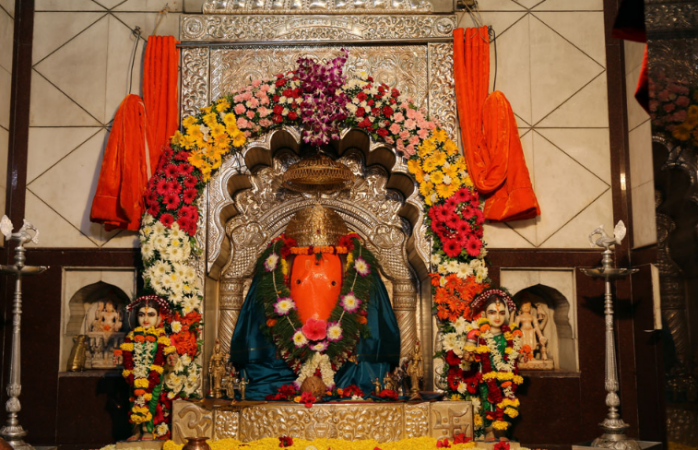
The land of India is renowned for its rich cultural heritage and ancient traditions. Amongst the countless spiritual destinations in the country, the Ozar Ganpati Temple stands as a testament to the devotion and reverence towards Lord Ganesha. With a history that stretches back several centuries, this temple has become a significant pilgrimage site for devotees from all walks of life. This article delves into the captivating history of Ozar Ganpati, explores its importance in Hindu mythology, and provides insights into the rituals and practices followed during worship.
History and Origins of Ozar Ganpati:
Located in the Junnar taluka of Maharashtra, India, the Ozar Ganpati Temple holds a place of great historical significance. The temple is one of the eight Ashtavinayaka temples, a group of eight ancient temples dedicated to Lord Ganesha. According to legend, these temples were established by the philosopher-saint, Shri Adi Shankaracharya, during the 8th century AD.
The origins of the Ozar Ganpati Temple can be traced back even further to the time of the epic Ramayana. It is believed that Lord Rama, along with his wife Sita and brother Lakshmana, visited this region during their exile. It was during their stay here that Lord Ganesha appeared before them in the form of Vigneshwara, the remover of obstacles, and blessed them on their journey.
Significance and Symbolism:
Lord Ganesha, also known as Ganpati, Vinayaka, or Vigneshwara, is one of the most revered deities in Hindu mythology. As the God of Wisdom, Knowledge, and Prosperity, he is worshipped at the beginning of every auspicious endeavor and celebration. The Ozar Ganpati Temple holds immense importance as devotees believe that seeking the blessings of Lord Ganpati here brings success, prosperity, and the removal of obstacles from their lives.
The Ozar Ganpati idol, made of solid brass, is a depiction of Lord Ganpati in his Siddhi Vinayaka form. This form represents the fulfillment of desires and is said to possess the power to grant the wishes of devotees. The idol is adorned with various ornaments and garlands, and its majestic presence evokes a sense of divinity and awe.
Worship and Rituals:
Devotees visiting the Ozar Ganpati Temple partake in a variety of rituals and practices to express their devotion. The worship of Lord Ganpati typically begins with a ceremonial bath or abhishek, where the idol is cleansed with water, milk, honey, and various sacred substances. This is followed by the offering of flowers, fruits, coconuts, and sweets, symbolizing the devotee's gratitude and surrender to the deity.
The recitation of Ganpati Atharvashirsha, a sacred hymn dedicated to Lord Ganesha, forms an integral part of the worship. Devotees chant this hymn to invoke the blessings and divine presence of Lord Ganpati. The temple premises are filled with the vibrant sounds of bhajans (devotional songs) and the fragrance of incense, creating an atmosphere charged with spiritual energy.
Devotees often engage in the practice of pradakshina, circumambulating the temple in a clockwise direction as a mark of respect and surrender. The inner sanctum of the temple, known as the garbhagriha, houses the idol of Lord Ganpati. Devotees offer their prayers, seek blessings, and sometimes make vows or sankalpas, pledging to undertake certain acts of devotion or service.
The Ozar Ganpati Temple stands as a testament to the deep-rooted spiritual faith and devotion of millions of Hindus. With its fascinating history, divine significance, and sacred rituals, the temple offers a profound spiritual experience to those who seek the blessings of Lord Ganpati. It serves as a reminder of the enduring presence of divinity and the power of faith in overcoming obstacles. A pilgrimage to Ozar Ganpati Temple is not just a physical journey but also a spiritual one, where devotees embark on a quest for blessings, wisdom, and inner transformation.
Kerala Devotees Engage in KARKIDAKA VAVU BALI Ritual Statewide